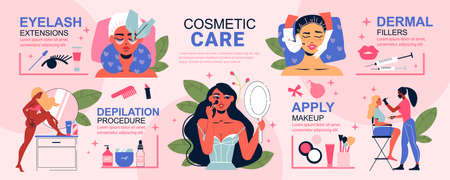Introduction to Activated Charcoal in Skincare
Activated charcoal has quickly become a household name in the American skincare industry, popping up in everything from cleansers and scrubs to face masks. But what exactly is this jet-black powder that seems to promise clearer, healthier skin? Originating from ancient holistic traditions, activated charcoal is created by heating natural materials like coconut shells or wood at high temperatures to increase its adsorptive power. This process gives it a highly porous structure, making it incredibly effective at drawing out impurities and toxins. In recent years, wellness enthusiasts and beauty experts across the U.S. have embraced activated charcoal for its potential to detoxify and purify the skin—especially as part of the booming DIY beauty movement. Its rise in popularity can be traced back to consumer demand for clean, effective ingredients that deliver real results without the harsh additives found in some commercial products. As Americans increasingly seek out natural solutions tailored to their unique skin concerns, activated charcoal’s reputation as a go-to ingredient for deep cleansing and oil control continues to grow.
Key Benefits of Activated Charcoal for Your Skin
Activated charcoal has rapidly gained traction in the U.S. skincare market, especially as a go-to ingredient for DIY face masks. Its popularity isn’t just hype—it’s backed by both scientific research and real-world consumer experiences. Here, we break down the key benefits that make activated charcoal a powerhouse for your skin.
Detoxification: Purifying Pores at a Microscopic Level
The core appeal of activated charcoal lies in its remarkable ability to attract and bind impurities due to its porous structure. When applied to the skin, it acts like a magnet for dirt, toxins, and bacteria trapped deep within your pores. This detoxifying action is particularly effective in environments where pollution and daily grime are major concerns, making it especially relevant for urban Americans seeking cleaner, clearer skin.
Oil Control: Balancing Excess Sebum
For those battling oily or combination skin, activated charcoal offers a natural solution for oil control. It absorbs excess sebum without stripping the skin of necessary moisture, helping to prevent breakouts while maintaining balance. This makes it an attractive option for U.S. consumers who prefer gentle yet effective alternatives to harsh chemical treatments.
Clarifying Effects: Smoother, More Radiant Complexion
Regular use of activated charcoal face masks can result in visibly clearer and smoother skin. By removing dead skin cells and minimizing the appearance of pores, activated charcoal helps promote a brighter complexion—an outcome supported by numerous American skincare enthusiasts who report improved texture and glow after consistent application.
At-a-Glance: Science-Backed Benefits of Activated Charcoal
| Benefit | Scientific Rationale | Consumer Insights (U.S.) |
|---|---|---|
| Detoxification | Binds toxins & impurities through adsorption | 80% report feeling “deep clean” after use* |
| Oil Control | Absorbs excess sebum while preserving hydration | Most popular among teens & adults with oily skin* |
| Clarifying Effect | Removes dead skin cells; minimizes pore appearance | Consistent users notice smoother, glowing skin* |
*Source: Recent U.S. consumer survey on DIY skincare trends (2024)
This unique blend of science-backed efficacy and positive user feedback highlights why activated charcoal continues to resonate with Americans prioritizing both wellness and effectiveness in their skincare routines.

3. Popular American Trends in DIY Face Masks
The DIY beauty movement has experienced explosive growth across the United States, fueled by a cultural shift toward self-care and personalized wellness. More Americans are turning to homemade solutions not only as a cost-effective alternative but also as a way to control the ingredients they put on their skin. Activated charcoal has emerged as one of the most buzzed-about ingredients, with its detoxifying properties making it a staple in countless DIY face mask recipes.
The Social Media Boom: Inspiring At-Home Creations
Platforms like Instagram, TikTok, and YouTube have played a pivotal role in amplifying the popularity of DIY face masks. Short-form videos showcasing easy-to-make activated charcoal masks have gone viral, with creators demonstrating everything from classic recipes to innovative blends featuring local ingredients like honey or oatmeal. The hashtag #DIYFaceMask frequently trends, inspiring millions of Americans to experiment with their own skincare routines at home.
Influencers Shaping Wellness Habits
Local wellness influencers—ranging from estheticians and dermatologists to lifestyle bloggers—are instrumental in promoting safe and effective use of activated charcoal in face masks. These voices often collaborate with natural product brands or share their personal recipes, offering practical tips on ingredient sourcing and proper application techniques. Their credibility helps consumers feel confident about trying these at-home treatments, while also emphasizing the importance of patch testing and moderation.
Community Engagement and Local Culture
Across American cities and suburbs alike, community workshops and pop-up events dedicated to DIY skincare are becoming more common. Health food stores and co-ops often host hands-on sessions where participants can mix their own activated charcoal masks, fostering a sense of community around holistic wellness practices. This trend reflects a broader movement toward sustainability and mindful consumption—a core value among many U.S. consumers today.
4. How to Make a DIY Activated Charcoal Face Mask
Creating your own activated charcoal face mask at home is both simple and rewarding. Not only do you gain control over the ingredients, but you can also customize the formula for your skin type. Below are step-by-step instructions for making an effective and safe face mask with ingredients you can find at most U.S. grocery stores, drugstores, or online retailers like Amazon or Target.
Ingredients You’ll Need
| Ingredient | Purpose | Where to Buy |
|---|---|---|
| Activated Charcoal Powder (1 tsp) | Detoxifies and draws out impurities | Health food stores, pharmacies, Amazon |
| Bentonite Clay (1 tsp) | Absorbs excess oil and tightens pores | Whole Foods, Target, online |
| Aloe Vera Gel (1-2 tsp) | Soothes and hydrates skin | Drugstores, Walmart, Amazon |
| Tea Tree Oil (2-3 drops) (optional) | Natural antibacterial benefits | Chemists, health aisles, online |
| Water or Rose Water (as needed) | Mixing agent for desired consistency | Grocery stores, beauty sections, Amazon |
Step-by-Step Instructions
- Prepare Your Workspace: Cleanse your hands and gather all materials. Use a non-metal bowl and spoon if possible to avoid deactivating the clay.
- Combine Dry Ingredients: Add 1 teaspoon each of activated charcoal powder and bentonite clay into your mixing bowl.
- Add Liquids: Mix in 1-2 teaspoons of aloe vera gel. Add water or rose water gradually until a thick but spreadable paste forms.
- Add Essential Oil: If using tea tree oil, add 2-3 drops now and mix thoroughly.
- Apply the Mask: Using clean fingers or a brush, apply an even layer to your face, avoiding eyes and lips.
- Let It Sit: Allow the mask to dry for 10-15 minutes. You may feel a tightening sensation as it dries—this is normal.
- Rinse Off: Gently remove the mask with warm water and a soft washcloth. Pat your skin dry with a clean towel.
- Moisturize: Follow up with your favorite moisturizer to keep your skin hydrated.
Troubleshooting & Tips for Best Results
- If your skin feels too dry after use, reduce the frequency to once per week or swap water for extra aloe vera gel.
- Sensitive skin? Do a patch test on your wrist before applying to your face.
- This mask is best used fresh—mix only what you need each time for optimal results.
The Bottom Line:
A DIY activated charcoal face mask is an accessible self-care ritual that leverages natural ingredients widely available in American stores. With just a few steps, you can create a spa-worthy treatment that refreshes and detoxifies your skin right at home.
5. How to Safely Apply and Use Charcoal Face Masks
Using a DIY activated charcoal face mask can offer impressive benefits, but proper application and usage are crucial to avoid skin irritation or other issues. Here’s how to maximize results while minimizing risks, drawing on guidelines from American dermatologists.
Step-by-Step Application Guide
First, always start with clean hands and a freshly washed face. Dermatologists recommend using lukewarm water and a gentle cleanser to remove dirt and oil before applying any mask. Apply the charcoal mask evenly in a thin layer, avoiding sensitive areas such as the eyes, lips, and nostrils. Use either clean fingertips or a soft brush for precise application. Let the mask sit for 10–15 minutes—never longer than the product instructions or recipe specify—to prevent excessive dryness or irritation.
Recommended Frequency of Use
Most skin experts suggest using an activated charcoal mask no more than once or twice per week, especially if you have sensitive or dry skin. Overuse can strip away natural oils, disrupt your skin barrier, and trigger redness or flakiness. For oily or acne-prone skin types, twice weekly may be effective, but always monitor how your skin responds and adjust accordingly.
Tips to Avoid Common Pitfalls
- Patch Test First: Before applying a new mask to your entire face, test it on a small area (like your jawline) to check for allergic reactions.
- Avoid Harsh Ingredients: Skip adding lemon juice, undiluted essential oils, or baking soda—these can be too harsh when combined with charcoal.
- Don’t Scrub Off: Gently rinse off the mask with lukewarm water; do not scrub or peel aggressively as this can damage skin.
- Moisturize After: Always follow up with a lightweight moisturizer to replenish hydration and maintain your skin’s protective barrier.
Dermatologist-Approved Advice
The American Academy of Dermatology emphasizes moderation: DIY masks should complement—not replace—your existing skincare routine. If you notice persistent dryness, irritation, or breakouts after use, discontinue immediately and consult a board-certified dermatologist. Remember that while activated charcoal is effective at drawing out impurities, healthy skin requires balance and gentle care above all.
6. Potential Risks and Precautions
While activated charcoal face masks have gained significant popularity among DIY skincare enthusiasts in the U.S., it’s important to recognize potential risks and exercise caution before incorporating them into your beauty routine. According to insights from the U.S. Food and Drug Administration (FDA) and leading American skincare professionals, there are several key considerations you should keep in mind.
Possible Side Effects
Activated charcoal is known for its powerful adsorptive properties, which can help remove impurities from the skin. However, overuse or improper application may lead to unwanted side effects. Some users report skin dryness, irritation, redness, or even a burning sensation after using charcoal masks—especially if left on for too long or used too frequently. Those with sensitive or compromised skin barriers are at a higher risk of adverse reactions.
Contraindications
If you have pre-existing skin conditions such as eczema, rosacea, psoriasis, or chronic acne, activated charcoal face masks may exacerbate your symptoms. The FDA advises patch testing any new skincare product before widespread use, especially for individuals with reactive skin types. Additionally, avoid applying charcoal masks to broken or inflamed skin to prevent further irritation or infection.
Allergy Warnings
Although allergic reactions to activated charcoal itself are rare, many DIY mask recipes incorporate additional ingredients like essential oils, clays, or botanical extracts that may trigger allergies. Always review ingredient labels carefully and discontinue use immediately if you notice swelling, itching, hives, or difficulty breathing.
Expert Recommendations
American dermatologists recommend limiting the use of activated charcoal masks to once per week and following up with a gentle moisturizer. It’s also wise to consult a board-certified dermatologist before adding any new DIY treatment to your regimen—particularly if you have underlying health issues or are taking prescription medications that affect your skin.
By being aware of these precautions and listening to your skin’s needs, you can safely enjoy the benefits of activated charcoal in your at-home skincare rituals while minimizing potential risks.
7. Wrap-Up: Is Activated Charcoal Right for You?
As we wrap up our exploration of activated charcoal in DIY face masks, it’s clear that this trendy ingredient offers plenty of promise—especially for those with oily or acne-prone skin. Its ability to draw out impurities, absorb excess oil, and leave skin feeling refreshed has made it a favorite among American skincare enthusiasts. However, before you jump on the bandwagon, it’s important to take a closer look at your unique skin type and lifestyle.
Key Takeaways
- Activated charcoal is best suited for oily, combination, or acne-prone skin types. If your skin is sensitive or prone to dryness, start slowly—perhaps with a patch test—to ensure it won’t be too harsh.
- DIY masks are cost-effective and customizable. You can tweak recipes to suit your needs, whether you want to add soothing ingredients like aloe vera or hydrating elements like honey.
- Consistency matters. Using a charcoal mask once or twice a week is generally sufficient; overuse can lead to irritation or dryness.
Does It Fit Your Lifestyle?
If you love experimenting with natural ingredients and enjoy the self-care ritual of masking at home, DIY activated charcoal masks could be a fun addition to your routine. However, if you have limited time or prefer professional guidance, consider store-bought options or consult with a licensed esthetician.
Getting Trustworthy Advice in the U.S.
The American skincare market is full of information—but not all advice is created equal. To make informed decisions:
- Check resources from reputable organizations like the American Academy of Dermatology (aad.org).
- Consult with board-certified dermatologists for personalized recommendations.
- Look for products with transparent ingredient lists and reliable customer reviews.
Your Next Steps
If you’re curious about trying activated charcoal masks, start small and listen to your skin. Remember: what works wonders for one person may not work for another. With careful experimentation and expert advice, you’ll find the approach that fits your skin—and your lifestyle—best.


